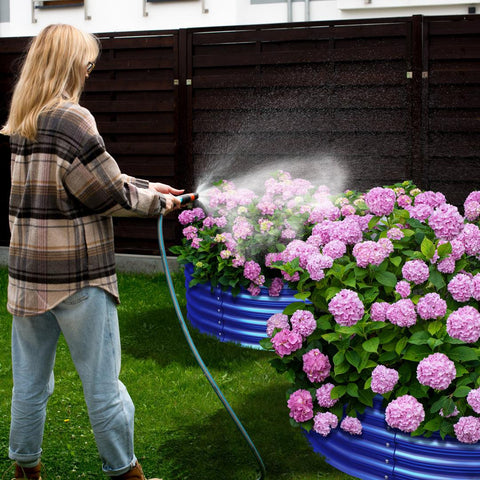Does The Raised Garden Bed Need Drainage?
Raised garden beds are a good way to grow your own crops without straining your back and knees. They are a practical solution for people who lack gardening space, live in concrete jungle and are physically restricted.
However, the same rules that apply to flowerpots and containers apply to raised garden beds - they must have proper drainage. When you buy flower pots and containers, they usually have prefabricated drain holes, or drill some before using them to grow plants. Although you don't usually have to worry about holes with raised garden beds, it is important to ensure proper drainage!
Drainage plays an important role in plant health and prevents stunting. Learn more about the types of raised garden beds and the importance of drainage to your plants.

Why is drainage so important?
Proper drainage is essential to prevent plants from drowning or flooding the soil.
Since you can directly dig the underground bed and the supported raised garden bed into the ground, you do not have to worry about drainage holes, but you may need to repair the compacted soil that may hinder normal drainage (how to modify this problem will be described in detail later).
When it comes to container raised garden beds or raised garden beds, make sure there are holes in the bottom of the container for proper drainage. Ideally, when you water the raised garden bed, your plants will absorb what they need and let the rest of the water drain from the drain hole of the container. If you decide to make your own convex bed, please do not forget this step!
When your container has no drain hole, water will gather at the bottom of the raised garden bed, suffocating the roots of plants and causing root rot. If you find root rot earlier, you can repair it, but it is usually fatal to plants.
In addition to root rot, damp soil can also cause mold, fungi and other annoying pests that you do not want to deal with. If you see mold growing on the soil, please know that there is a problem with the drainage system of your soil or flower pot. Mold is not a direct threat, but if left unattended, it may damage your plant.

How to improve the drainage of raised garden beds
If you find it challenging to maintain a perfect watering schedule, ensuring proper drainage is quite another matter! First, make your own organic potted soil for your container garden. Do not use garden soil without testing and modifying it with soil conditioner and compost to improve its texture, health and fertility.
Then, does the container raised garden bed need to be drained? Yes, just like your other potted plants and container plants, the bulge also needs a drain hole to prevent water from accumulating at the bottom and damaging crops.
Use different soil amendments, such as perlite, vermiculite, bark and sand, to improve the structure and drainage capacity of the soil. You need to maintain a proper balance between drainage and retention.
Do not place rocks or bricks at the bottom of the container to improve drainage. These will force the moist soil to move towards the plants and roots, eventually leading to root rot. The rock at the bottom will also prevent the root of the plant from spreading downward.
Don't forget to add earthworms to the bulge; They will help improve drainage and aerate the soil in the process. In addition to promoting soil drainage and ventilation, they also left nitrogen rich castings to promote the healthy growth of plants.

Only good leeks!
Raised garden beds are the perfect solution for almost any garden. They not only make gardening easier, but also offset the negative effects of soil erosion and nutrient erosion. In addition, they can improve soil drainage and root health, and keep pests and weeds out while looking neat and elegant.
If the soil does not drain or retain water properly, watering can save and kill plants. This is why it is important to ensure that your raised garden bed has adequate drainage. You can do this by drilling drainage holes at the bottom of the container, using special potting soil mixtures, and adding modifiers and earthworms to improve ventilation, drainage, and nutrition.
